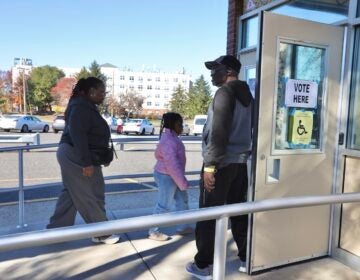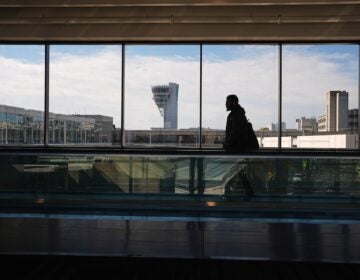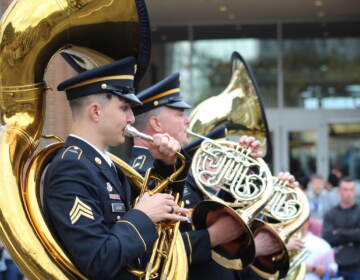The list: 10 groups still helping New Jersey’s Superstorm Sandy victims

Homes along the New Jersey shoreline were battered during Hurricane Sandy (AP Photo, file)
When Sandy slammed into New Jersey’s coast in October 2012, teams of volunteers from around the country flocked to the region, lending a hand to muck out basements and clear debris.
Nonprofit organizations also leapt into action, holding telethons and other fundraising events, eventually pledging more than $380 million to the relief effort throughout the region.
Two-and-a-half years later, most of the volunteers have left, and the money is running out. Daily news about the storm recovery has faded from the headlines, yet many residents continue to struggle. Not everyone has moved on, though. The following groups are still working in the trenches, providing essential services to storm victims up and down the coast.
This list is by no means comprehensive, so if there’s a particular group we didn’t include that has helped you and your family or whose ongoing work you feel others should know about and support, feel free to mention it in the comments section below.
1. Long Term Recovery Groups in each county
The best starting point for Sandy victims looking for help is to contact their county’s Long Term Recovery Group, which is an umbrella organization of faith-based, nonprofit, governmental, business, and other groups and agencies working together to assist storm survivors. Applicants are paired with case managers who review their situations and direct them to appropriate resources, walking them through the recovery process from start to finish. In some cases, recovery groups can also offer aid like short-term rental assistance.
2. Legal Services of New Jersey
Sandy presented a wide variety of complicated legal issues for storm victims, ranging from problems with FEMA and insurance claims to difficulties accessing benefits to landlord-tenant disputes. Those who were struggling to make ends meet before the storm were hit especially hard. In response, Legal Services of New Jersey set up a special telephone hotline (888-222-5765) to offer pro bono guidance to low income residents on civil matters related to the storm. On its website, the group also offersinformation about various state-aid programs for Sandy victims.
3. Seer Farms
When Seer Farms was founded in 2008, its owners intended for it to be a sanctuary for people to place their animals while they were facing personal issues like foreclosure, medical situations, or domestic violence. After Sandy, it took on an entirely new role, providing temporary shelter to more than 500 pets from 187 families throughout the state.
Though demand isn’t as great as it was immediately after the storm, the farm still gets calls from storm victims nearly every day and has a waiting list of people in need of their services.
Traditional animal boarding can run hundreds or even thousands of dollars a month. With the assistance of Seer Farms, hundreds of Sandy survivors have been able to avoid giving up their pets. The organization also helps provide animal food and veterinary care for needy families.
4. Jersey Shore United
This Christian group dedicated to helping restore, strengthen and rebuild families and communities affected by natural and personal disasters recently got more funding to provide energy-efficient appliances for Sandy victims without the means to purchase their own. They also supply “hope chests” for storm survivors — giant Tupperware bins filled with all the essentials people might need for their first day back in their rebuilt homes.
5. Preferred Behavioral Health of New Jersey
While Sandy may seem like a distant memory for many people who weren’t directly affected by the storm, a Monmouth University poll released last October found that the 1-in-5 survivors are still experiencing serious emotional distress. Many don’t realize they need help, however, and one-third of respondents said they were unable to access the care they needed due to affordability issues, not knowing where to look, or being overwhelmed with other concerns.
Since the storm, Preferred Behavioral Health’s Sandy Support and Counseling Project has offered free therapy to address the mental health needs of residents dealing with stress and trauma. Last fall it received a $150,000 grant from the Hurricane Sandy NJ Relief Fund, allowing it to continue offering its services to storm victims through the end of this year.
6. Habitat for Humanity in Monmouth County
Habitat for Humanity is best known for its work building homes for the needy, but the organization also helps in other ways. Habitat’s Monmouth County chapter is stillaccepting applications to assist with Sandy-related repairs for income-eligible homeowners. It also operates a ReStore in Freehold, where people rebuilding their homes can purchase low-cost furniture, appliances and home goods. The group is currently offering $1,000 vouchers to a limited number of Sandy victims to help them purchase essential items for their homes. In addition, it offers classes to teach people how to repurpose items and conduct do-it-yourself repairs.
7. Room in Our Hearts
Katharine Koehler and her team of volunteers help Sandy victims by furnishing and decorating one room in their newly rebuilt house — usually a bedroom or a family room. After meeting with a homeowner to understand his or her needs and tastes, they get to work, using a mix of new and upcycled furniture, accessories, rugs, and paintings they get from donations and places like flea markets. They’ve furnished about 50 rooms so far, mostly in the Raritan Bayshore region.
8. Hearts & Hands Disaster Recovery
Trained and certified volunteers with Hearts and Hands provide free mold-remediation services to Sandy victims, and they warranty their work for three years. They also seek to educate and raise awareness among homeowners of the dangers of mold exposure.
While homeowners are displaced, waiting for their homes to be rebuilt or remediated, the group can also provide temporary shelter in a solar-powered, igloo-like dome, which it will place in their backyard. “Charlie’s House,” — as it’s called — offers a fully functioning kitchen, bathroom, and bedroom and has a composting water system, all within 314 square feet of living space.
9. Housing Recovery Resource Center
The Affordable Housing Alliance offers counseling for Sandy-impacted residents of Monmouth and Ocean counties to help them find permanent housing and make the best decisions for their unique situations. Among its services are personal budget assessments, mortgage modification, and foreclosure prevention. Counselors also help walk people through the home-reconstruction process and offer educational workshops on financial literacy and topics like avoiding contractor fraud. Services are offered both at the resource center in Atlantic Highlands and via a mobile office that travels throughout the two counties.
10. St. Bernard Project
Formed in southeast Louisiana in the wake of Hurricane Katrina, the St. Bernard Project has expanded its efforts to the Northeast in the aftermath of Sandy, partnering with Sea Bright Rising to reconstruct homes in Monmouth County, as well as working with groups in Staten Island and the Rockaway section of Queens, New York.
In addition to offering rebuilding support, the group received a grant from the Hurricane Sandy NJ Relief Fund last July to hire teams of electricians and plumbers to aid with the recovery effort, keeping construction projects on time while cutting costs for homeowners. The skilled trades program is open to Monmouth County nonprofit organizations and residents who lack the financial resources to complete repairs to their primary residences. The grant is expected to cover repairs to about 120 homes.
____________________________________________
NJ Spotlight, an independent online news service on issues critical to New Jersey, makes its in-depth reporting available to NewsWorks.
WHYY is your source for fact-based, in-depth journalism and information. As a nonprofit organization, we rely on financial support from readers like you. Please give today.




